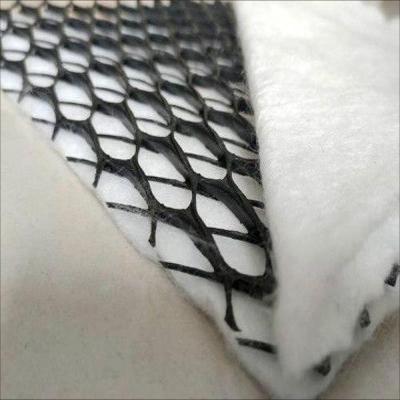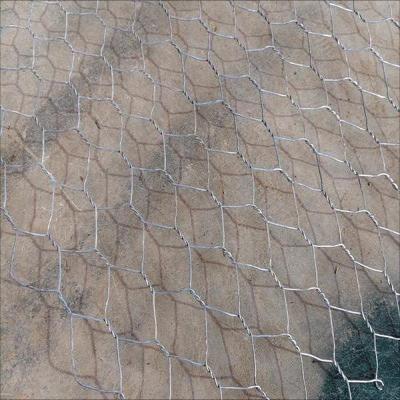Composite drainage network And gabion net are commonly used materials in engineering. So, what are the differences between the two?
Composite drainage network
1. Material composition
1、Composite drainage network
Composite drainage net is a geosynthetic material made of plastic net with three-dimensional structure and permeable geotextile bonding on both sides. Plastic mesh core generally uses high-density polyethylene ( HDPE) Made of such polymer materials, it has very good tensile strength and corrosion resistance. Permeable geotextile can enhance the water permeability and anti-filtration performance of the drainage net, and prevent soil particles from entering the drainage channel.
2、Gabion net
Gabion mesh is a hexagonal mesh structure woven from metal wires (such as low carbon steel wires). Therefore, gabion mesh has extremely high flexibility and water permeability. The surface of metal wires is usually treated with corrosion protection, such as galvanizing or cladding PVC, It can prolong its service life. The inside of the gabion net is filled with hard materials such as stones to form a stable slope protection or retaining structure.
2. Functional application
1、Composite drainage network
The composite drainage net has the functions of drainage and anti-seepage. It is suitable for projects that need to quickly remove groundwater or surface water, such as landfills, roadbeds, tunnels, etc. It can quickly guide water to the drainage system and prevent accumulated water from damaging the engineering structure. The permeable geotextile layer can also play an anti-filtration role to prevent the loss of soil particles.
2、Gabion net
The main function of gabion net is slope protection and soil retention. It can be used in slope protection projects of rivers, lakes, coasts and other water bodies, as well as slope stabilization projects of roads, railways and other traffic projects. Gabion net can form a stable slope protection structure by filling hard materials such as stones, which can resist water erosion and soil landslide. It also has very good ecological adaptability, which can promote the growth of vegetation and realize the harmonious coexistence of engineering and nature.
Gabion net
3. Construction method
1、Composite drainage network
The construction of composite drainage network is relatively simple. At the construction site, just lay the drainage net in the area that needs drainage, and then fix and connect it. Its material is light and soft, and it can adapt to various complex terrain and construction conditions. It can also be used in combination with geomembrane, geotextile, etc.
2、Gabion net
The construction of gabion net is relatively complicated. The metal wires are woven into a hexagonal mesh structure, and then cut and fold Stack And assembled into a box cage or mesh mat. Then place the cage or net mat in the position where slope protection or soil retention is needed, and fill it with hard materials such as stones. Finally, it is fixed and connected to form a stable slope protection or retaining structure. Since the gabion net needs to be filled with a large number of stones and other materials, its construction cost is relatively high.
4. Applicable scenarios
1、Composite drainage network
Composite drainage networks are suitable for projects that need to quickly drain groundwater or surface water, such as landfills, subgrades, tunnels, municipal projects, etc. In these projects, the composite drainage network can prevent the damage of accumulated water to the engineering structure and improve the safety and stability of the project.
2、Gabion net
Gabion net is suitable for slope protection of rivers, lakes, coasts and other water bodies, as well as slope stabilization projects of roads, railways and other traffic projects. In these projects, gabion net can form a stable slope protection or retaining structure, which can resist water erosion and soil landslide.
Post time: Apr-27-2025





